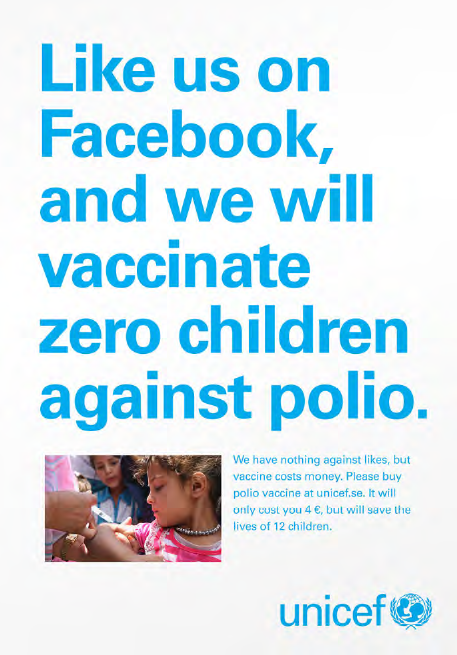I've actively worked in direct marketing for more than 30 years, and never before has it been this easy to be a great marketer. The Internet now provides access to virtually unlimited free information on marketing best practices through blogs, webinars and more.
Yet in spite of this pervasive availability of information on how to make marketing work better, there are still many marketers who miss or ignore practices that have been proven to work time and time again.
One often misunderstood and misused element in marketing is the offer. Once the audience is properly identified and targeted, the offer is the tool that can make or break marketing success. It can dramatically affect ROI, cost-per-lead, cost-per-sale, and the company's bottom line.
In my involvement in the strategy and execution of over 4,000 B2C and B2B campaigns, I've learned a lot about offers and how to find the ones that maximize response and minimize costs. Here are seven insights into offers that should help marketers properly use this powerful tool.
1. Understand the difference between an offer and a product or service.
Research has shown that when someone reads, hears or watches a marketing message, that person may say, "That sounds interesting, I'll have to check into that later." For a large percentage of people, later turns into never.
The offer is the tool that overcomes that inaction, and gives interested parties an incentive to act now.
For large purchases in business and with consumers, offering free information is a great way to collect a prospect's information so they can be nurtured toward a purchase. For lower-cost business products or consumer products, offers may be discounts or extras that are part of a purchase. Here are a few typical examples:
- Buy three tires before 00/00/00 and get the fourth FREE.
- Act now to get 13 months for the price of 12.
- View our demo and be entered in a drawing for a FREE iPad.
- Download this complimentary Guide now.
- Request a FREE Assessment now.
2. Make the offer relevant to the prospect—not to the people doing the marketing.
Many marketers choose offers based on what they personally like or want, but rarely do marketers accurately reflect the desires and attitudes of their qualified buyers. It's important to make a selection that can resonate with the targeted market.
- Keeping the demographics and psychographics of the audience in mind is essential in the selection of the right offer.
- What a professional marketer may think is cheesy, like a pen set or a pedometer, could be very effective for the right market.
- Offers are usually more successful if they are items that are easily passed along to family members or associates.
3. Don't spend more than is necessary.
It's important to test offers to determine how strong the offer needs to be to drive the required response. Here's an excellent, real-life example:
Marketers at a large consumer communication company had decided to offer a $7 discount on each monthly bill. Before they did, they tested a discount at four levels to learn what might work best. They saw a large increase between an offer of $2 and $3 dollars off, but virtually no lift between $5 and $7 off. They were then able to make the offer $3 off and save hundreds of thousands of dollars in the process.
4. Make the call to action very clear.
Direct marketing is primarily an "offer delivery channel." Its purpose is to get a viable prospect to read, see or hear the offer, understand it and know what they are supposed to do to take advantage of it. Once the prospect understands the offer, he or she needs to know what they are to do next. Testing has shown that, even if what the reader needs to do seems obvious, giving clear instructions lifts response. Here are some tips on making sure that happens:
- Tell prospects exactly want they need to do and when. Words like "now" or "today" are necessary so there is no question about what the prospect is to do.
- Make the call to action simple and click-able, such as "click here" or "call now."
- Present the expiration date prominently to add urgency.
- Present the offer more than once—experts say at least three times.
- Make the offer stand out by using use larger type, putting it in a box, or making it bold.
A strong offer in a message that is presented in an unclear or hard to understand manner will not be successful.
5. Don’t assume a better offer by itself can fix a broken program.
Marketers should remember that offers are not always the key to a more successful program. A fabulous offer sent to the wrong prospect will fail. A great offer as an incentive to buy or inquire about an inferior product will fail.
6. Consider the perceived value of what is being offered.
Marketers should select offers based on the cost, time and effort needed for prospects to take advantage of the offer. However, it's important to consider the perceived value of what is being offered. If the offer is a pedometer that costs $2, the perceived value to the prospects may be $10 to $20.
7. Test, test, then test some more.
Most of all it's important to test offers before rolling them out in full campaigns. Once a winning offer is identified, it's smart to continue to test new offers. Having a fresh offer on the shelf keeps program performance from sagging when the current offer wears out.
Offers are designed to generate a response from a qualified prospect. This makes the offer the most important part of marketing messages. As the true power behind marketing success, the message needs to sell the offer, tell prospects what they will get if they respond, and what they will lose if they don't.




